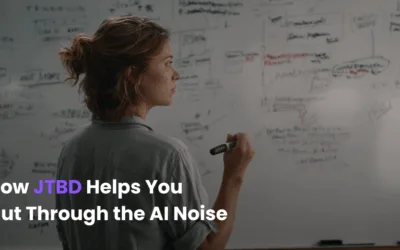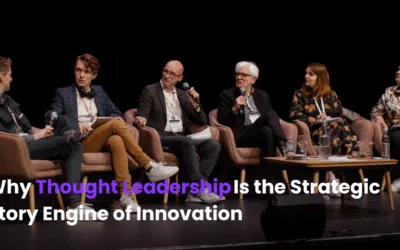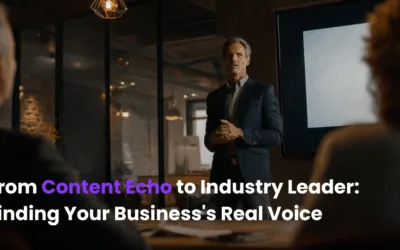Only 36% of Google searches result in a click. That means 64% of potential engagement is lost to zero-click searches – where users get the answer directly from the search results page.
For any organisation, that’s both a challenge and an opportunity.
To capture attention before the click, we must evolve beyond traditional SEO. The new frontier is AI Engine Optimisation (AEO) – strategically shaping your content for AI-driven systems like Google’s Search Generative Experience, the Knowledge Graph, and voice-based assistants.
Here’s how to structure your content for machines and humans – so you win both visibility and trust.
What is AI Engine Optimisation?
AI Engine Optimisation is about positioning your content to answer questions directly, using natural language that AI systems can understand, process, and rank. It’s the art (and science) of designing content for both search engines and the AI that powers them.
While SEO gets you seen, AEO gets you selected – for snippets, voice search, and generative summaries.
1. Structure for Answer-Focused Snippets
These days Google isn’t just indexing pages – it’s answering questions. Your job? Structure your content in such a way that the answer is easy to extract.
Practical tips:
- Use H2s and H3s that mirror common queries (“What is X?”, “How does Y work?”).
- Follow questions with short, direct answers – ideally within the first 50–60 words.
- Format answers as paragraphs, bullet points, or tables, depending on the query type.
This isn’t fluff – it’s function. Answer-structured content feeds featured snippets, knowledge panels, and voice responses that are the basis of zero-click search content.
2. Create Self-Contained Snippets
Think in blocks. Each section of your content should be a self-contained unit that makes sense even when isolated.
Why? Because Google and AI engines extract segments, not full pages.
Your AEO checklist:
- Begin each section with a bold statement or direct answer.
- Include context within the snippet (who, what, why).
- Minimise dependency on the rest of the article—front-load clarity.
You’re not just writing for readers. You’re writing for systems trained on semantic relationships and NLP models.
3. Optimise for Natural Language
AI engines don’t scan for keywords – they parse meaning. To align with this, your content needs to reflect how humans speak and ask questions.
Use:
- Conversational tone that mirrors user intent (e.g. “How do I scale AI in government?”)
- Long-tail queries embedded naturally in headers and copy
- Pronouns and context cues that help AI systems understand relationships between ideas
This isn’t dumbing it down – it’s designing for dialogue, not just search. This is good news for wannabe script writers like me!
4. Leverage the Google Knowledge Graph
The Knowledge Graph connects people, places, brands, and ideas. If your content isn’t integrated into that web, you’re invisible to the systems that matter.
AEO strategies:
- Link to recognised entities in structured data (e.g. “Disruptors Co” → @DisruptorsCo)
- Use schema markup to define your content’s role (article, FAQ, product, organisation)
- Ensure consistent naming, logos, and language across all content
The goal: become machine-recognisable. When the Knowledge Graph knows who you are, your content travels further – faster.
AI Engine Optimisation in Action: A Strategic Advantage
For scaleups looking to establish thought leadership, enterprises aligning content with go-to-market strategy, or government teams aiming for public clarity, AEO is more than an edge – it’s the new necessity.
At Disruptors Co, we help you move beyond keyword stuffing and outdated SEO tactics. Our strategies fuse AI fluency, content structure, and innovation design to build assets that earn visibility – before, during, and after the click.
The New Search Reality: Think Like a System, Write Like a Human
SEO got you seen. AEO gets you selected.
In a landscape where attention is scarce and algorithms decide what gets read, it’s not enough to be relevant – you need to be readable by machines, useful to people, and positioned for purpose.
Want help shaping your next campaign or landing page for AEO performance? Let’s make it measurable.



